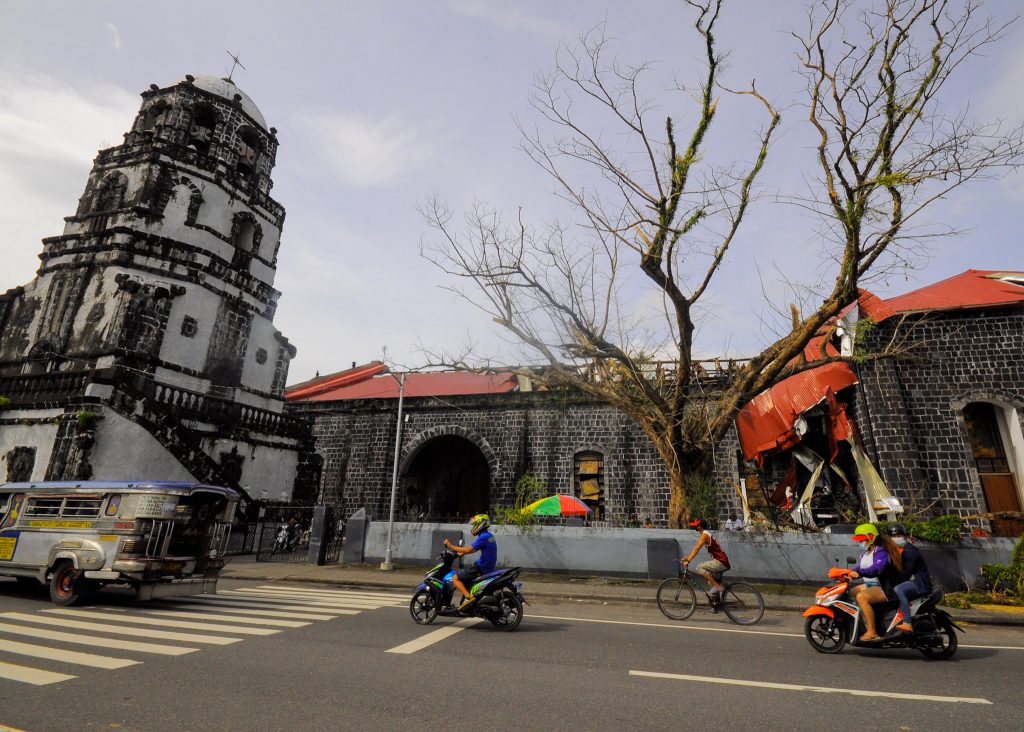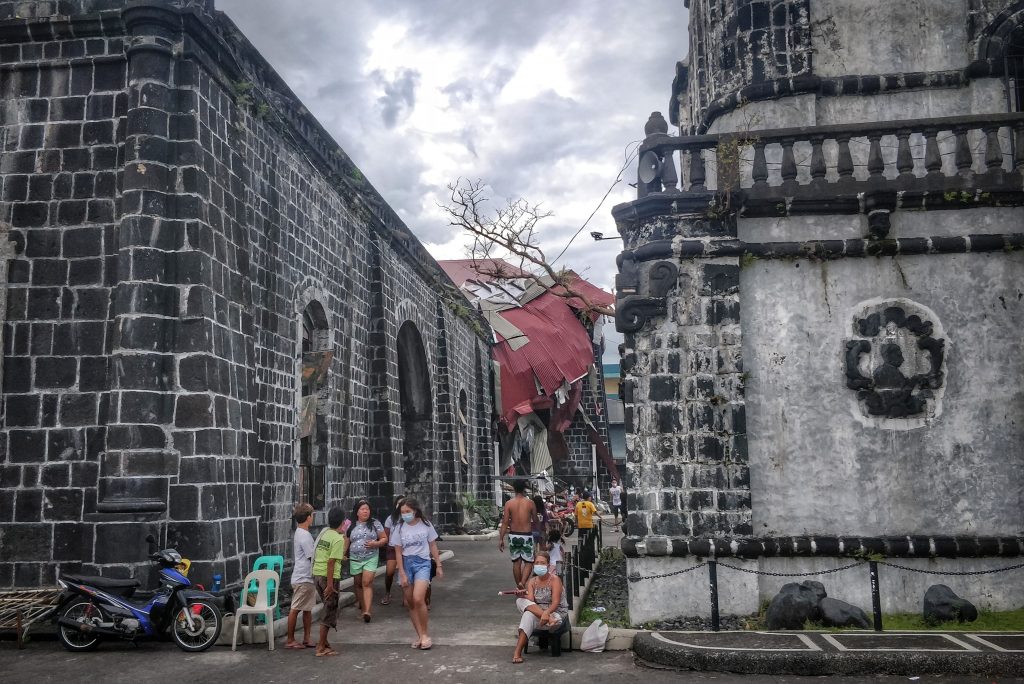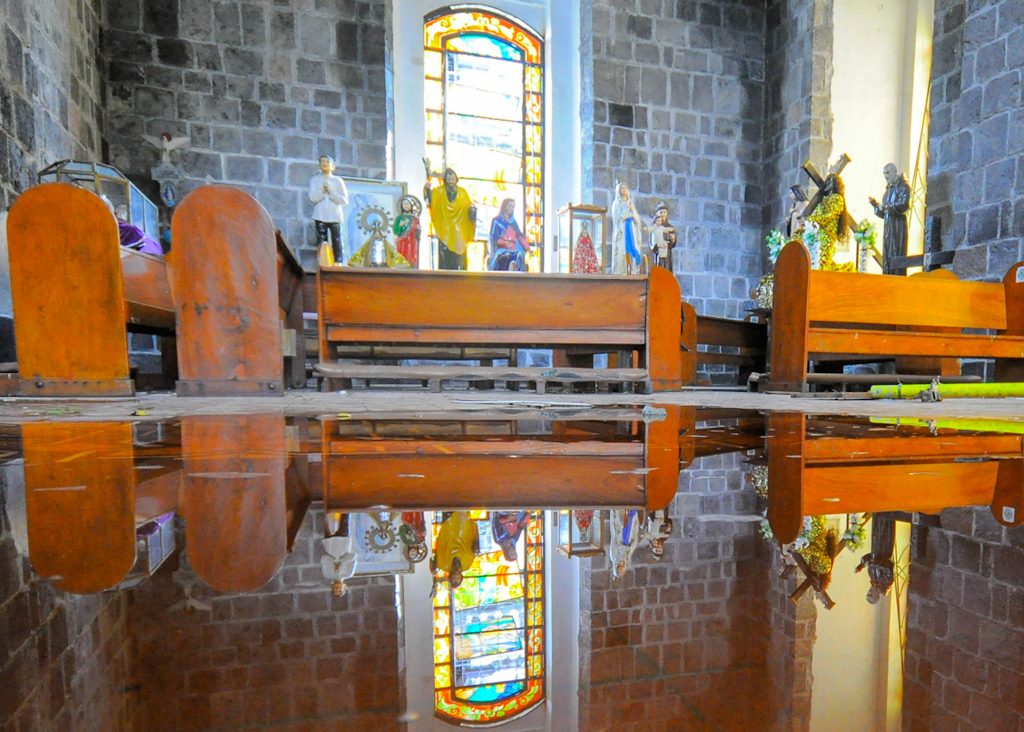
The St. John the Baptist Church in the city of Tabaco in Albay served as a refuge for residents during the onslaught of super typhoon “Rolly” (international name: Goni) early this week.
When its roof was blown off by strong winds, the displaced people had to run to the nearby convent for shelter.
The church, a cultural heritage in the province, has been a witness to the fears and hopes of people in the midst of typhoons, earthquakes, and volcanic eruptions.
The original place of worship was established by Franciscan missionaries in 1587 when the village of Tabaco was a “visita” of the town of Cagsawa.
A “visita,” or “chapel,” is a structure where people who cannot go to the parish church in the town center use for worship or for Sunday service.
When Tabaco became an independent town, the people built its own parish church out of wood and light materials. It was placed under the patronage of St. John the Baptist, the patron saint of the town.
In the 1600s, marauding pirates threatened the people of the town, forcing them to relocate away from the coast.
In 1723, the people decided to settle in what is now the village of Cormidal and built their first stone church in 1731.
In 1742, however, a super typhoon devastated the town. In 1811, a strong earthquake destroyed most structures, including the church.
In 1814, barely three years after the earthquake, the first stone church in Cormidal was covered with ashes and lava from the erupting Mayon Volcano.

The rebuilding after the disaster gave birth to a bigger stone church that has since stood the challenges of time and the calamities that seem to frequent the province of Albay.
Half a century later, Father Fermin Llorente, an engineer and a soldier before becoming a priest, was assigned head of the parish in Tabaco and led the building of the St. John the Baptist Church.
With the help of the parishioners, a new stone church was built beside the town’s watch tower, which was turned into the town’s belfry in 1864 and was completed in 1879.
The new stone church has an altar made of hardwood, two side altars, a pulpit, and a choir loft. It has frescoes depicting Biblical scenes and angels and paintings on its ceiling.
Even before super typhoon “Rolly,” the church’s roof has been replaced countless times after strong winds carried it during the previous typhoons that visited the province.
In 2012, the 141-year-old church, which was built out of dark volcanic soils and stones that are held together by molasses mixed with lime, was declared one of only two heritage sites in the Bicol region.
Close inspection of the stones would reveal masonic marks and rococo designs, a rarity in the Philippines. It is believed to be abbreviations of the names of the artisan-masons who crafted the blocks.

The Tabaco church, known in the town as Daculang Simabahan, or “big church,” has served as a refuge for people against calamities.
“It is the symbol of the city’s faith and culture, too,” said Father Rex Arjona of the social action center of the Diocese of Legazpi, adding that it is “heartbreaking” to see the church destroyed.
Bishop Joel Baylon of Legazpi, however, said tragedies and calamities are inevitable.
“So when they come, as they always do, we just have to prepare and get ready, then sit through it until it’s over, rebuild and move on,” said the bishop.
The prelate, however, said that while work on the immediate repair of the church is planned, “we do not forget that many homes have been destroyed.”
He said the people come first before the structures, be it places of worship or heritage sites.
Source: Licas Philippines
0 Comments